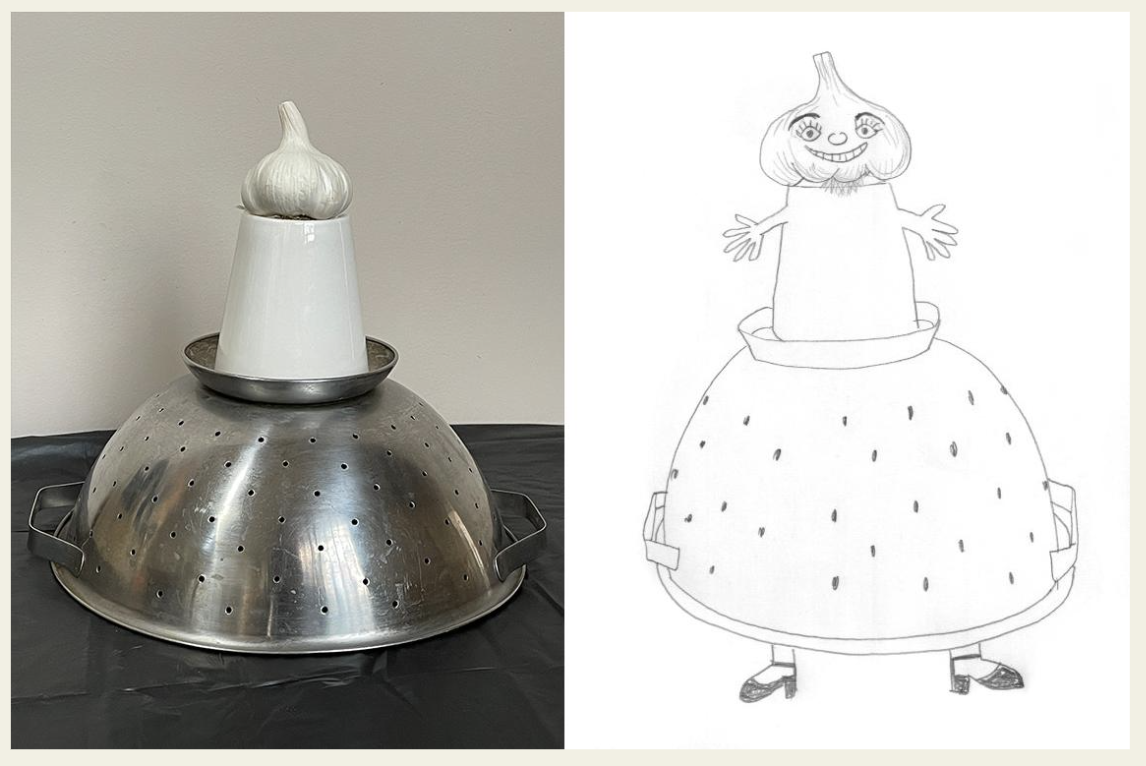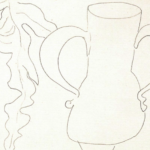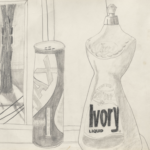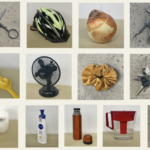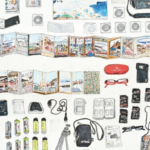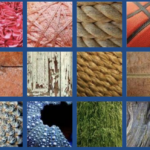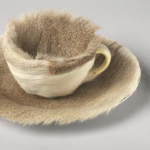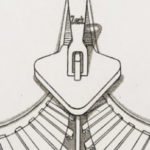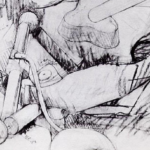Overview
In this unit, students will draw objects from observation, experiment with different perspectives, and transform these objects into characters.
Lessons
Materials and Tools
- Drawing tools: lead pencil, colored pencil, oil pastel, chalk pastel, charcoal, marker, fine black marker
- Paper
- Eraser
- Pencil sharpener
- Household object to draw
- Tape (optional)
Alternative Materials
- In place of pencils, different drawing tools can be used, such as:
- Artist pencils with different degrees of hardness
- Artist pens of different thickness
- Colored pencils
Objectives
- Students will be able to demonstrate purposeful use of drawing pencils to create varied lines and visual textures
- Students will be able to identify how an artist uses line, shape, and texture to describe how an object looks and feels
- Students will be able to apply knowledge about drawing from observation and imagination to represent a household object in a novel way
Student Outcomes
Students will understand that:
- That a pencil is a tool that can create many different variations in line, texture, and value through the use of different techniques
- How to look closely and use line, shape, and texture to draw from observation
- That looking at objects from different points of view can inspire new ways of seeing them
Students will be able to:
- Identify and create varied lines, textures, and values with a pencil
- Identify the shapes that make up an object and their proportions, then apply this knowledge to draw complex objects
- Demonstrate awareness of different ways to transform an object in their drawing and make choices that express their own ideas
Resources
Illustrator Rob Turpin discusses his fantastical cities, landscapes, and spacecraft: https://wordpress.com/discover-wordpress/2015/12/28/rob-turpin-interview/
Learn about the sculptural continuous line drawings of Alexander Calder: https://www.tate.org.uk/art/artists/alexander-calder-848/who-is-alexander-calder
Adaptations
For Students with Disabilities
- Use different types of reference for observation. Take photos of objects in addition, or as an alternative, to observing objects when drawing
- Have students hold the objects before drawing. Ask students to notice how they feel. What are the edges like? What shapes do you notice?
- Sort and organize objects into categories before drawing
- Offer choices of drawing tools, such as larger pencils, pens, or sharpies
- Break down drawing from observation into steps to focus on one at a time
- Use audio with visuals in student-facing lesson guides
- Use technology to create drawings on an iPad or in Google Classroom
- Use audio with visuals in the student-facing Google Slides
For Multilingual Learners
- Activate prior knowledge—ask students to share their ideas and previous knowledge about drawing throughout the lesson sequence
- Have students describe their objects in their native language before drawing them
- Have students describe their peers’ work in writing or discussion during reflection
- Ask students to describe their work and process to a friend or family member
- Use images paired with lesson steps to help with meaning
- Emphasize repetition of new art vocabulary and spiral vocabulary
- Signpost: tell students what you are going to do next
- Chunk information and keep instructions concise
- Elicit information: ask open-ended questions and give students time to think about an answer. Extend wait time
- Use multiple entry points: speak, show, and do
- Use audio with visuals in student-facing lesson guides
New York Teaching & Learning in Visual Arts Standards
Art Making: 8th Grade Learning Indicators for Drawing
Create a drawing that demonstrates:
Literacy in the Arts
- Looking at and Discussing Art
- Developing Visual Arts Vocabulary
- Reading and Writing About Art
- Problem Solving: Interpreting and Analyzing Art
Making Connections
- Observing and Interpreting the World
Community and Cultural Resources
- Cultural Institutions
- Public Art and Design
- Online Resources and Libraries
Careers and Lifelong Learning
- Awareness of Careers in Visual Arts
Art for Enjoyment and Lifelong Learning
NYS Learning Standards for the Arts
Artistic Process: Creating
Anchor Standards:
- Anchor Standard 1: Generate and conceptualize artistic ideas and work
- Anchor Standard 2: Organize and develop artistic ideas and work
- Anchor Standard 3: Refine and complete artistic work
Artistic Process: Presenting
Anchor Standards:
- Anchor Standard 4: Select, analyze, and interpret artistic work for presentation
- Anchor Standard 5: Develop and refine artistic techniques and work for presentation
- Anchor Standard 6: Convey meaning through the presentation of artistic work
Artistic Process: Responding
Anchor Standards:
- Anchor Standard 7: Perceive and analyze artistic work
- Anchor Standard 8: Interpret meaning in artistic work
- Anchor Standard 9: Apply criteria to evaluate artistic work
Artistic Process: Connecting
Anchor Standards:
- Anchor Standard 10: Relate and synthesize knowledge and personal experiences to inspire and inform artistic work
- Anchor Standard 11: Investigate ways that artistic work is influenced by societal, cultural, and historical context and, in turn, how artistic ideas shape cultures past, present, and future
Credits
Writing Team
Nick DeMarco, Jamie Powell, Robin Holder, Tim Thyzel
Project Team
Belinda Blum, Nicola Giardina, Paul Urevitch, Andrea Burgay
Studio in a School NYC Team
Julie Applebaum, Senior Director
Hasna Muhammad, Ed.D., Chair, Board of Directors, Studio in a School Association
Alison Scott-Williams, President, Studio in a School NYC
NYC Department of Education OASP Team
Karen Rosner, Director of Visual Arts
Amber Lodman, Arts Program Manager
Kaitlin Trammell, Remote Arts Learning Partnership Project Coordinator
NYC Department of Education OASP Team
Karen Rosner, Director of Visual Arts
Amber Lodman, Arts Program Manager
Kaitlin Trammell, Remote Arts Learning Partnership Project Coordinator
NYC Department of Education Visual Arts Teacher Team
Maria Bonilla, Amie Robinson, Susan Bricker, Lara Tyson
These educational materials were created through a partnership with Studio in a School NYC and The New York City Department of Education Office of Arts and Special Projects (OASP) and made possible by the generosity of The New York Community Trust.
Copyright © 2023 Studio in a School NYC LLC

